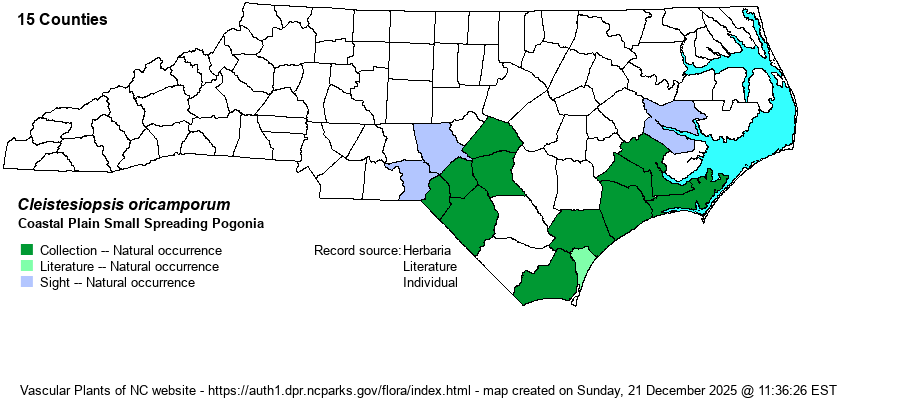| taxonName | relationship | relatedTaxonName | relatedTaxonRefText | relComments |
|---|
|
|
| Cleistesiopsis oricamporum | < | Cleistes divaricata | Gleason and Cronquist (1991) | |
| Cleistesiopsis oricamporum | < | Cleistes divaricata | Gleason (1952) | |
| Cleistesiopsis oricamporum | < | Cleistes divaricata | Godfrey and Wooten (1979, 1981) | |
| Cleistesiopsis oricamporum | < | Cleistes divaricata | | |
| Cleistesiopsis oricamporum | < | Cleistes divaricata | Radford, Ahles, and Bell (1968) | |
| Cleistesiopsis oricamporum | < | Cleistes divaricata | Small (1933, 1938) | |
| Cleistesiopsis oricamporum | < | Cleistes divaricata | Wofford (1989) | |
| Cleistesiopsis oricamporum | < | Cleistes divaricata | Correll (1950)=X. | |
| Cleistesiopsis oricamporum | < | Cleistes bifaria | Flora of North America (1993b, 1997, 2000, 2002a, 2002b, 2003a, 2004b, 2005, 2006a, 2006b, 2006c, 2007a, 2009, 2010) | |
| Cleistesiopsis oricamporum | < | Cleistes bifaria | | |
| Cleistesiopsis oricamporum | < | Cleistes bifaria | Correll (1950)=X. | |
| Cleistesiopsis oricamporum | < | Cleistes divaricata var. bifaria | Fernald (1950) | |
| Cleistesiopsis oricamporum | < | Cleistes divaricata var. bifaria | Flora of West Virginia | |
| Cleistesiopsis oricamporum | < | Cleistesiopsis bifaria | Flora of Virginia | |
| Cleistesiopsis oricamporum | < | Cleistesiopsis bifaria | Correll (1950)=X. | |
| Cleistesiopsis oricamporum | < | Pogonia bifaria | Wunderlin & Hansen Flora of Florida (3) | |
| Source: Weakley's Flora |

